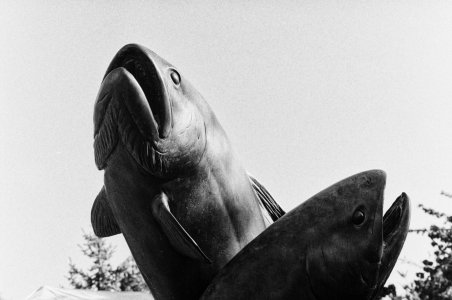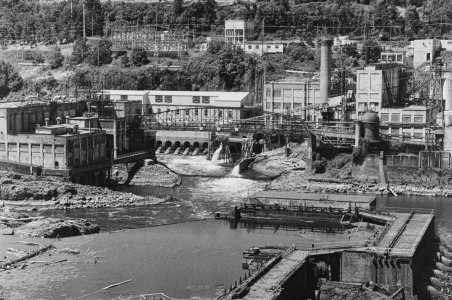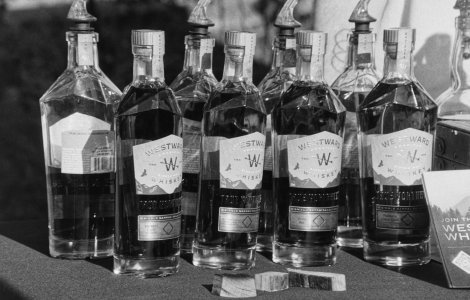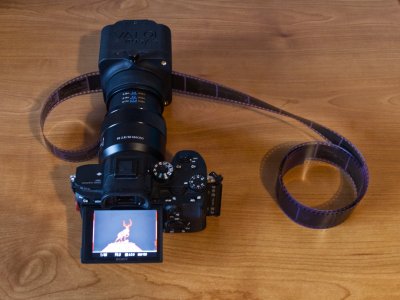I have been processing black and white film since I was about 10 years old. Dad brought home an enlarger and a Johnson and Johnson "Essex" daylight loading developing tank about then. The tank was basically a copy of the Agfa Rondinax tank and has the same patent number embossed on it, this and the 120 tank, the "Kent", were only marketed in the UK between around 1951 and 1954 due to the high import duties levied on luxury goods making the Agfa offerings extremely expensive. The current Lab-box is a development of this type of processing tank. Since I shoot 35mm and 120 film (amongst others) I still have my Essex tank and about 15 years ago I added a Kent to my kit. 110, 16mm and 9.5mm films are taken care of with my Jobo gear, as is all my E-6 processing.
I really don't like messing around in a dark bag so the daylight loading tanks are a boon. if I have to load a film reel in the dark I am fortunate enough to have a room in my home which I can completely black out and load tanks by hand in there.
My developer of choice for black and white films is ilford Ilfotec DD-X, which although designed for T-grain films (Ilford Delta, Kodak T-Max etc) works as a pretty fine grain developer for Acros and FP4 / HP5, although I am not happy with any HP5 processing really - too much grain. Alternatively I use Rodinal (or its current equivalent) or Kodak HC-110. Ilfotec DD-X is an expensive developer compared to the others as it is a 1+4 dilution for processing film, and allegedly, it does not keep once opened - I have been using the same bottle of DD-X for 3 years - it keeps if all the air is expelled and is well stoppered. Rodinal would outlast the shelf it was stored on and HC-110 is much the same.
E-6 processing is very much more controlled and any brand of E-6 chemicals will produce excellent results. I have used the Fuji Hunt 6 bath and the Tetenal 3 bath chemicals both giving good results. I will shortly be trying the Cinestill E-6 kit as the others are not currently available.
To get back on point - having got my negatives I needed to digitise them. I personally don't like the macro photography route utilising a stand and camera, and since I entered the digital age in about 2000, I bought a cheap film scanner for a project - it worked pretty well giving me 1800 dpi scans of 35mm negs and slides. This worked out to be about 3mp equivalent - not bad for the time. I then upgraded to a Minolta Dimage Scan Dual IV film scanner for 35mm and APS film which gave scans at 2700 DPI or about 6.6mp. To cope with 6 x 6 film then purchased an opticfilm 120, multi format scanner with a native resolution of 5300 DPI with a 35mm negative or slide giving 25.5mp. It can interpolate to 10,600 DPI a little over 101mp for a 35mm frame. it produces enormous files at 48 bit colour and IR. A maximum definition 35mm frame can be several Gb in size. As a bonus, with adapters, the Opticfilm scanner can scan everything from 9.5mm to 6 x 12 cm! i also have used Epson 4490 and V600 scanners with good results on windows 10 and 11 and never had any issues with either Epson Scan or Epson Scan II software even with WiFi network attached printer / scanners.
For general purpose scanning I have found that 2700 DPI or thereabouts gives a good compromise for image quality, enlargability and file size.
My software of choice for film scanning is Vuescan 9 pro (the current version) which I originally bought a long time ago as I had a scanner whose software would not run on the then current version of Windows. It has been continually upgraded for free since that purchase which makes it one of the most cost effective pieces of software I own, as it will work with almost any scanner known to man, including obsolete models. it does take a little learning as there are a lot of adjustments available to the user in the pro version. Ii must say, however, the customer service is not what it used to be when Ed Hamrick was operating the company on his own, since his son joined they have become less communicative and helpful, but the software remains good and is continuously updated for new scanners. It has the facility to produce IT8 targets and can be calibrated using IT8 targets.
My workflow for film is process film, scan using whatever scanner can scan the film size I am using and gives me the resolution and speed I am looking for. Scans are made at same size and with no alterations. Add EXIF data using Geosetter and AnalogExif as required, make any adjustments to the image as required in Affinity Photo 2 and file on 2 raid arrays and with an offsite storage provider.






